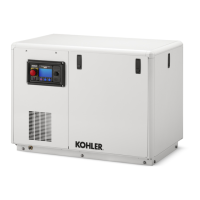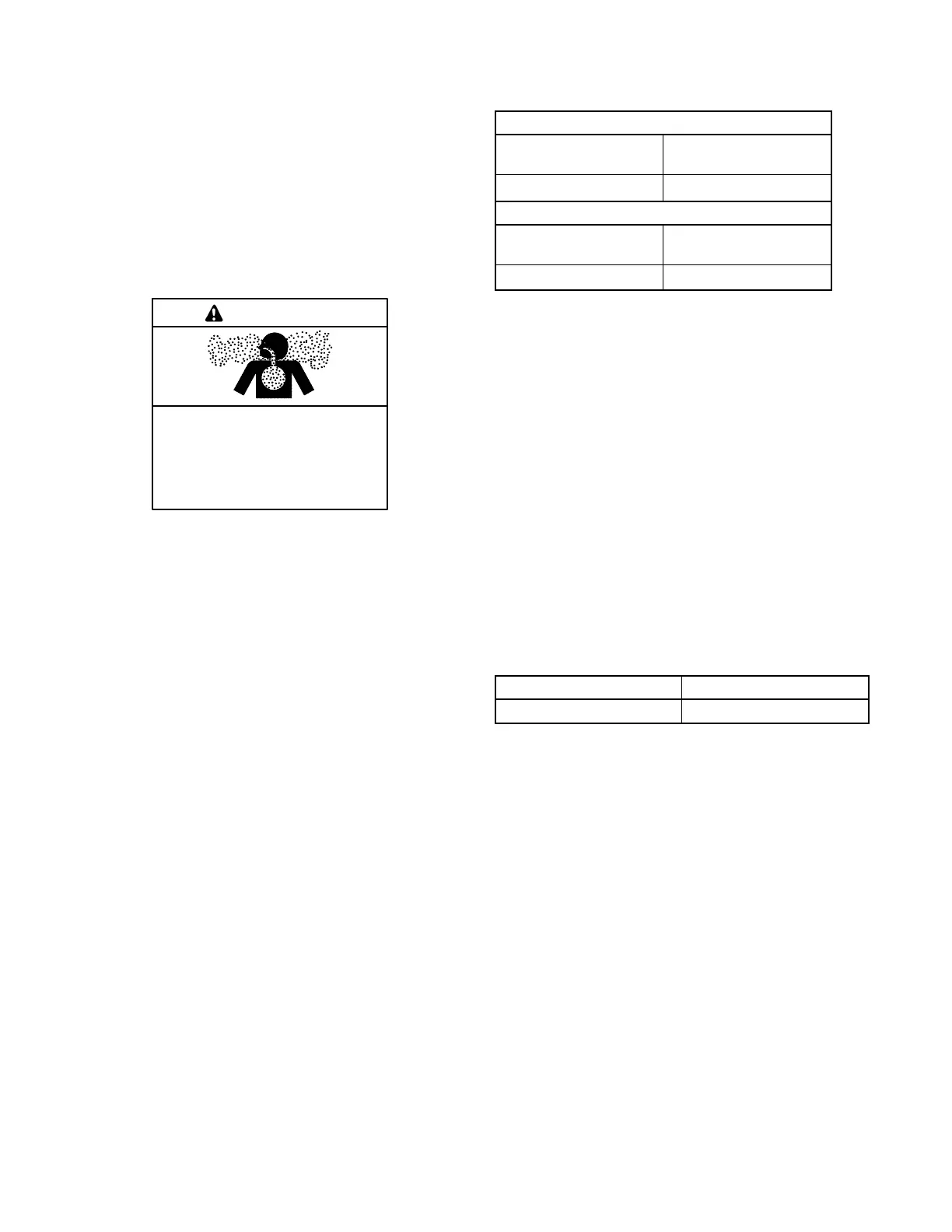TP-6953 7/1938 Section 2 Operation
2.2 Marine Inspection
Kohler Co. recommends that all boat owners have their
vessels inspected at the start of each boating season by
the US Coast Guard, the local Coast Guard Auxiliary, or
local state agency.
Kohler Co. also recommends having the generator’s
exhaust system inspected at the start of each boating
season by an authorized Kohlerr distributor/dealer.
Repair any problems identified before o perating the
generator set.
Carbon monoxide.
Can cause severe nausea,
fainting, or death.
The exhaust system must be
leakproof and routinely inspected.
WARNING
Carbon monoxide symptoms. Carbon monoxide can
cause severe nausea, fainting, or death. Carbon monoxide
is a poisonous gas present in exhaust gases. Carbon
monoxide is an odorless, colorless, tasteless, nonirritating gas
that can cause death if inhaled for even a short time. Carbon
monoxide poisoning symptoms include but are not limited to
the following:
D Light-headedness, dizziness
D Physical fatigue, weakness in
joints and muscles
D Sleepiness, mental fatigue,
inability to concentrate
or speak clearly, blurred vision
D Stomachache, vomiting, nausea
If experiencing any of these symptoms and carbon monoxide
poisoning is possible, seek fresh air immediately and remain
active. Do not sit, lie down, or fall asleep. Alert others to the
possibility of carbon monoxide poisoning. Seek medical
attention if the condition of affected persons does not improve
within minutes of breathing fresh air.
Inspecting the exhaust system. Carbon monoxide can
cause severe nausea, fainting, or death. For the safety of
the craft’s occupants, install a carbon monoxide detector.
Never operate the generator set without a functioning carbon
monoxide detector. Inspect the detector before each
generator set use.
Operating the generator set. Carbon monoxide can cause
severe nausea, fainting, or death. Be especially careful if
operating the generator set when moored or anchored under
calm conditions because gases may accumulate. If operating
the generator set dockside, moor the craft so that the exhaust
discharges on the lee side (the side sheltered from the wind).
Always be aware of others, making sure your exhaust is
directed away from other boats and buildings.
2.3 Angular Limits During Operation
See Figure 2-1 for angular operation limits.
13- 24EKOZD/11- 20.5EFKOZD Models
Instant Operation
(upto1min.)
Intermittent Operation
(upto30min.)
35_ 25_
32- 40EKOZD/28- 35EFKOZD Models
Intermittent Operation
(upto1min.)
Continuous Operation
35_ 25_
Figure 2-1 Angular Limits During Operation
2.4 Operation in European Union
Member Countries
This generator set is specifically intended and approved
for operation below the deck in the engine compartment.
Operation above the deck and/or outdoors would
constitute a violation of European Union Directive 2000/
14/EC noise emission standard.
2.5 Load Profile
Whenever operating the generator set, Kohler Co.
recommends maintaining the minimum load profile
indicated in Figure 2-2. Maintaining the load profile
prevents corrosion formation on internal engine
components when they’re exposed to the breakdown of
exhaust gases. Extended light loading may result in
engine “wet stacking.”
Min. Load Requirement Ideal Load Requirement
30% load 70% load or more
Figure 2-2 Load Profile
Unburned Fuel (Wet Stacking) occurs when water/fuel
vapor condenses in the exhaust system. At normal
combustion temperatures, water stays vaporized but at
low combustion temperatures, it condenses back to a
liquid. When running the generator set under normal
loads (30% load or more) for long periods of time, diesel
exhaust stays hot enough to prevent water/fuel vapor
from condensing. Conversely, if the generator set is
subjected to light loads (30% or less) for long periods of
time, water/fuel vapors accumulate and may result in the
following conditions to develop:
D Cylinder wall glazing
D Fuel on water
D Crankcase oil dilution
D Wet stacking
Note: Consult the engine manufacturer’s guidelines for
more details on unburned fuel and wet stacking.

